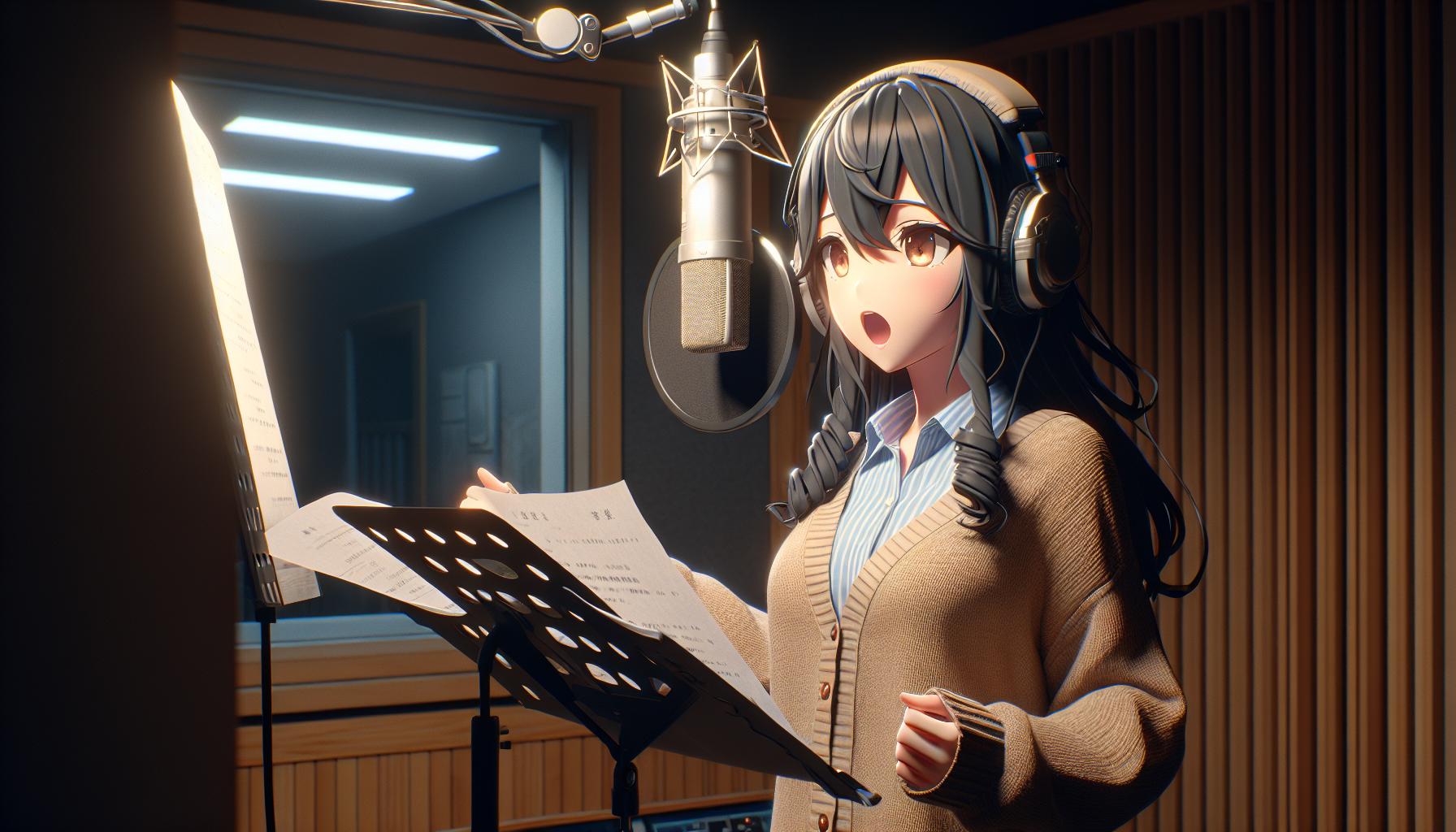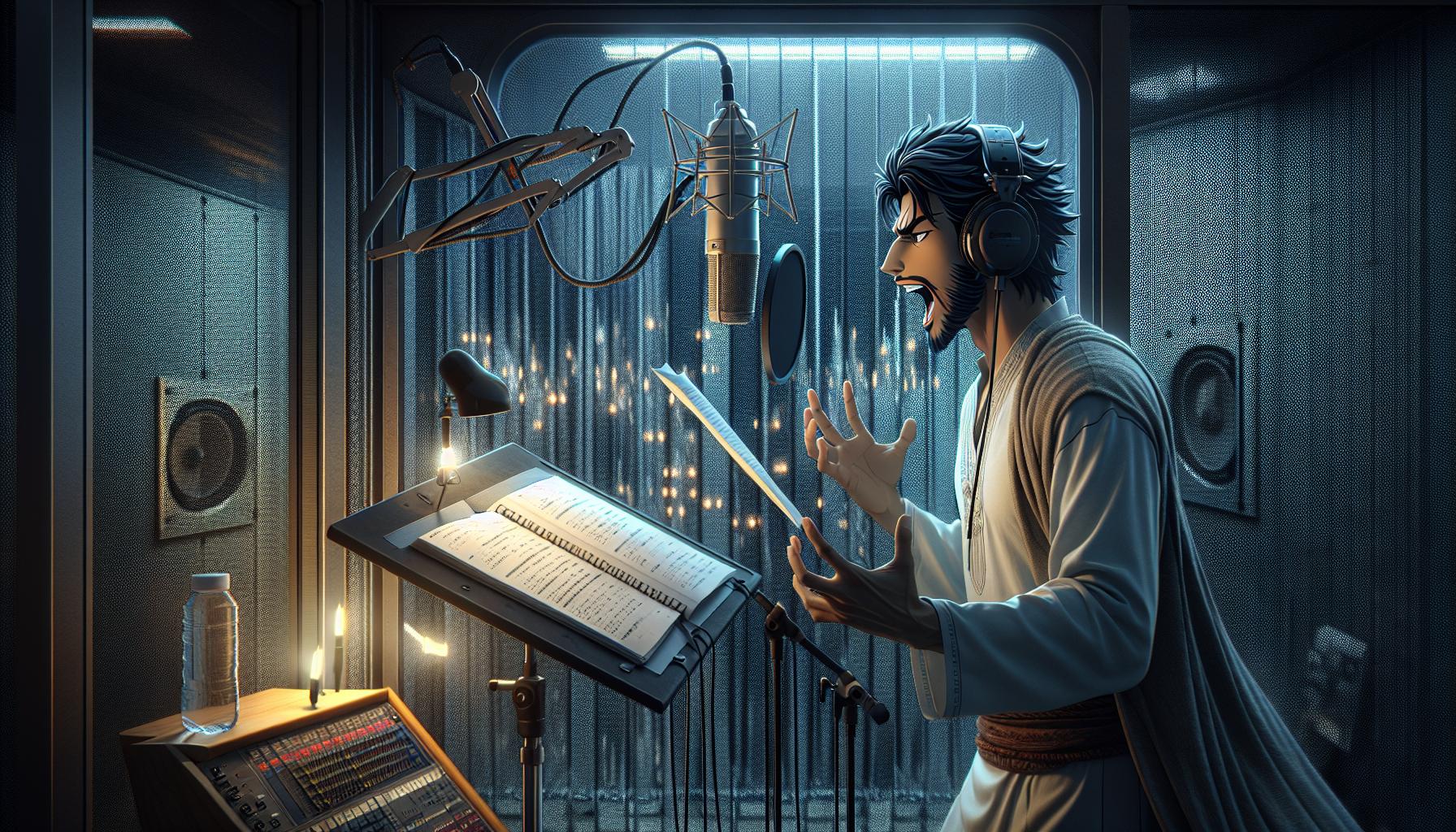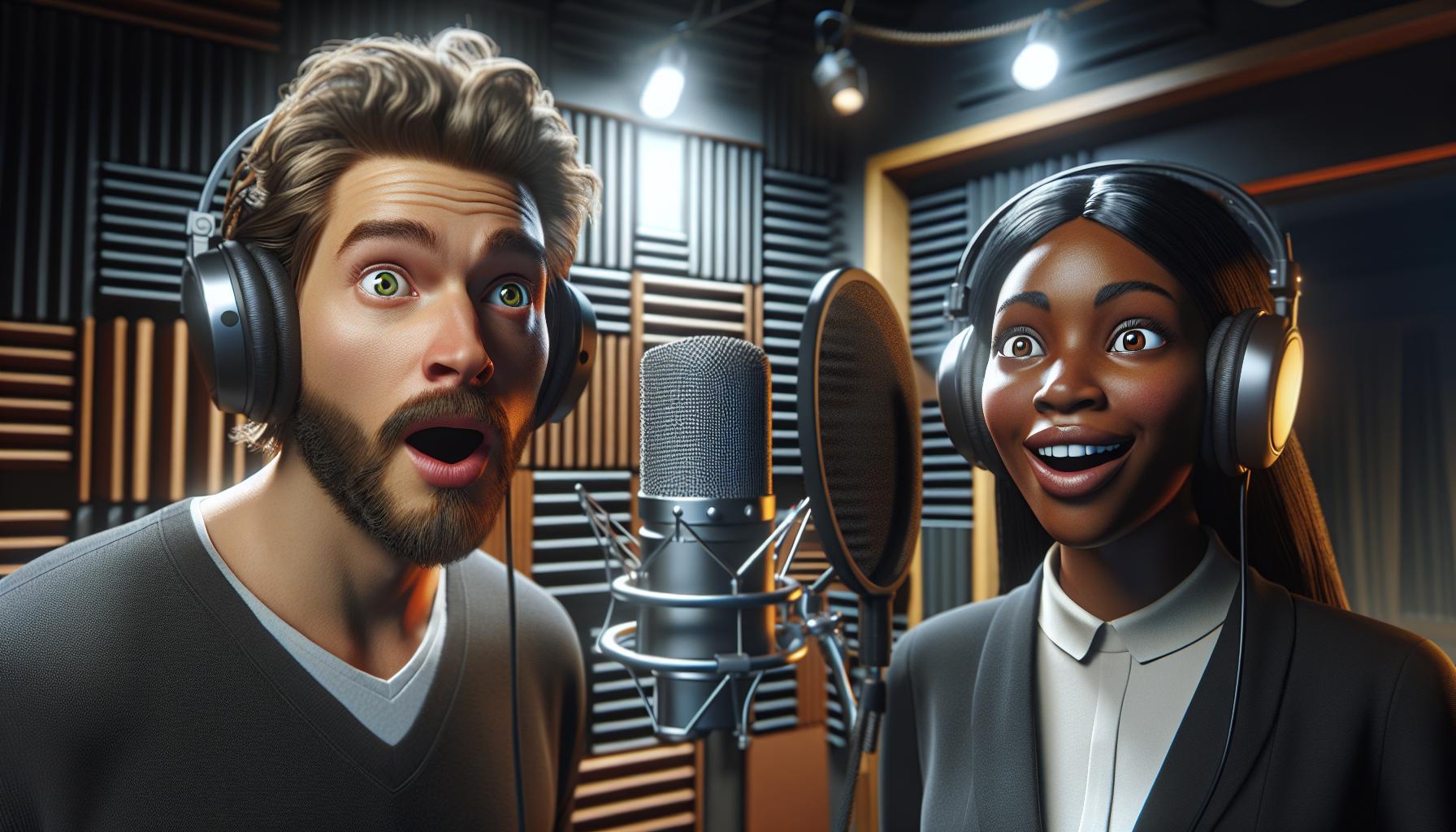Anime has a unique way of expressing emotions, and one of its most distinctive sounds is the “anime moan.” It’s a sound that’s instantly recognizable to fans, often used to convey a range of emotions from discomfort to pleasure, and everything in between.
But what’s behind this iconic sound? I’ll dive into the cultural significance of the anime moan, exploring how it’s become a staple in the genre and what it says about the characters and situations it’s used in. Whether you’re a seasoned otaku or new to the world of anime, understanding this nuanced aspect of anime storytelling is sure to enhance your viewing experience.
The Sound of Anime Moan
Anime has a rich tapestry of sounds that contribute to its unique atmosphere, and among these, the anime moan is particularly emblematic. Distinctive for its pitch and tonality, the anime moan is not merely a background noise but an integral part of the storytelling process. It’s a sound that conveys a spectrum of emotions, from pleasure and pain to shock and introspection, often serving as a conduit for character development.
This peculiar auditory expression is crafted with precision by voice actors who specialize in the art of emotive vocalization. By varying the pitch and cadence, voice actors can infuse each moan with layers of meaning, making it resonate with audiences in profound ways. Experienced fans can often deduce the narrative context just by hearing the subtleties in an anime moan.
Understanding the cultural nuances that influence the depiction of emotion in anime is crucial, and I can’t overemphasize the value of recognizing Japan’s complex relationship with expressiveness. Context is key, and by delving into articles from respected sources like the Journal of Japanese Studies, we gain a deeper grasp of how and why these sounds are employed.
In more pragmatic terms, sound engineers also play a pivotal role. They manipulate and refine the moans, ensuring they perfectly complement the visuals on screen. Whether it’s through reverberation or the layering of sounds, a skillfully edited moan can enhance a scene’s emotional impact, making it a memorable experience for the viewer.
As anime continues to captivate audiences worldwide, the anime moan persists as a hallmark of its expressive range. These are the sounds that animate emotions—that bridge the gap between reality and fiction, drawing viewers deeper into the world of anime. For those curious about the technical side, the Audio Engineering Society provides insights on the sophisticated processes involved in capturing and enhancing these iconic sounds.
In bridging the cultural gap, anime moans help international audiences connect with the characters on a visceral level, showcasing that emotions, no matter how they’re expressed, are universally understood.
Understanding the Cultural Significance
When I delve into the complexities of the anime moan, it’s crucial to recognize its deep cultural roots. This distinctive sound, surprisingly rich in context, serves as a bridge between the viewer and the character’s inner psyche. In Japan, where the line between the private self and public persona is often heavily drawn, the anime moan can reveal a character’s most intimate moments and emotions. It’s not merely a sound; it’s an audible expression of feelings that might otherwise go uncommunicated.
Moreover, the anime industry has matured significantly over the decades, and with it, the subtleties of voice acting have become more refined. Anime voice actors, or seiyuu, train rigorously to perfect their craft. Their ability to produce an array of moans that can communicate pain, pleasure, shock, or a spectrum of other emotions is nothing short of artistic expression.
The emotional resonance of the anime moan can’t be overstated. When an anguished cry echoes through a scene, it doesn’t just enhance the narrative; it pierces the heart. International audiences connect emotionally with these characters because the moan behaves almost as an emotional universal language. For those unfamiliar with Japanese culture, the anime moan serves as a vehicle to understand nuances without the barrier of language. One can sense the gravity of a scene through the raw emotion conveyed in a single sound.
In understanding the cultural significance of the anime moan, it’s helpful to look at scholarly analyses, such as those from The Anime Art Museum or auditory cultural research. These sources provide insights into how the anime moan is more than a trope; it’s a carefully engineered component designed to evoke empathy and add layers to character development.
The skillful manipulation of this sound by seiyuu and audio engineers profoundly impacts the anime experience. By employing the anime moan, creators offer an audible glimpse into the characters’ emotional states, adding depth and authenticity that resonates across cultural divides. This is especially significant in emotionally charged genres, where the moan amplifies the intensity of the moment, essentially becoming a narrative tool in its own right.
The Range of Emotions Conveyed
Voice actors in anime are tasked with an intricate job: to capture a wide spectrum of feelings with just their voices. Emotional resonance is a skill honed over time, and anime moans are a testament to the range these actors can achieve. From the softest whimper of despair to the loudest cry of victory, each moan is meticulously crafted to evoke a specific response from the audience.
I’ve noticed that the power behind a character’s moan can be profoundly moving. Take for instance the expressions of agony; they’re not merely sounds, but audible windows into the soul of the character. Through these nuances, viewers can connect deeply with the character’s plight, no matter their cultural background. Similarly, moans of joy or satisfaction carry a contagious energy that can lift spirits and bring smiles.
The complexity of emotions that a single moan can convey may include:
- Exhilaration
- Anguish
- Relief
- Triumph
- Despondency
Each of these feelings requires not only vocal talent but an understanding of timing and context. As I delve deeper into this subject, it’s clear that voice actors must also possess a keen emotional intelligence to interpret a scene and translate it into a believable vocal expression. This emotional intelligence is bolstered by their rigorous training, which often involves mastering breath control, pitch variation, and resonance—skills that professional voice coaches like those at the Voice Actors Network help to cultivate.
Furthermore, what distinguishes a good anime moan from a great one is the ability of the voice actor to tap into the shared human experience. By doing so, they touch on universal sentiments, making the character’s emotions relatable on a global scale. The academic discussions around this aspect offer a deep dive into how and why these sounds strike a chord across different demographics.
In essence, an anime moan isn’t just an auditory cue; it’s a multilayered, emotional delivery that can push a scene from good to unforgettable. The dedication of voice actors to their craft ensures that with every moan, they’re not just filling a silence but also enriching the narrative fabric of the storyline.
Anime Moan as a Staple in the Genre
When exploring the defining elements of anime, the notable anime moan can’t be overlooked. Beyond its emotive value, it has become a staple sound in the genre, synthesizing culture, emotion, and character depth into a single, audible expression. The anime moan is not just background noise; it’s an intricate part of storytelling that has a profound impact on how scenes and character emotions are perceived.
As a seasoned anime viewer, I’ve noticed that the significance of the anime moan extends to a variety of genres – from action-packed shonen series to the more subdued slices of life. The moan is a versatile tool, capable of conveying a spectrum of emotions such as surprise, passion, or pain. In more intense narratives, like those found in psychological thrillers or horror anime, the voice actors’ ability to deliver a chilling moan can elevate the atmosphere to new levels of suspense and engagement.
Voice actors in this industry don’t take their responsibilities lightly. They study the art of the moan meticulously. Websites like Behind The Voice Actors provide a glimpse into the careers of these talented individuals, showcasing the breadth of their skills and the roles they’ve brought to life with their voices. Understanding the careful nuance required to produce the perfect moan is to appreciate the anime medium even more.
Training for voice actors often includes mastering their vocal ranges to tailor their moans to specific characters and situations. The emotional intelligence they bring to the table is paramount – they must connect with their characters on a deep level to portray genuine emotion. In fact, some academic resources, such as articles from the Japan Society for the Promotion of Science, explain how the cultural context also plays a crucial role in the way emotions are expressed vocally in anime.
Anime moans straddle the line between being a simple sound effect and a language of their own. It’s fascinating how a single vocalization can cross cultural barriers, allowing for a shared experience amongst international audiences.
The depth and versatility of anime moans undoubtedly contribute to the anime experience, making it a universal storytelling device. For anime fans and newcomers alike, recognizing the anime moan as a deliberate artistic choice adds another layer to enjoying this dynamic and deeply expressive art form.
What the Anime Moan Reveals About Characters and Situations
When I delve into the world of anime, I’m often struck by the subtle cues that anime moans provide about characters and situations. These vocalizations aren’t just throwaway sounds; they’re carefully crafted to add layers to a character’s personality and the storyline. The emotive power of a character’s moan can reveal their inner turmoil, joy, or even their hidden intentions.
Take for instance the painful moan. It’s not merely an expression of physical hurt but can signify emotional distress or a pivotal moment of vulnerability. The moan can tell you loads about the character’s resilience or breakability. It’s a sound that resonates with the audience, allowing us to feel a deep connection with the character’s experience.
The sensual moan, on the other hand, often accompanies scenes of intimacy and can disclose facets of a character’s personal journey or relationship dynamics. It’s here that voice actors truly showcase their mastery of the craft—injecting the right amount of breathiness, pitch, and modulation to convey the complexity of romantic encounters without a single word.
From a narrative standpoint, anime moans can signal transitions between scenes or shifts in tone. A sudden moan may herald an upcoming twist or the revelation of crucial backstory elements. There’s an art to placing these sounds at just the right moment to enhance viewer engagement and deepen the storyline.
In the context of the broader cultural landscape, I’ve found insightful discussions on the subject from thought leaders in the field. For instance, academia often delves into these practices. Scholarly analyses contribute an in-depth perspective on how these sounds function within the anime’s visual and narrative architecture. Similarly, industry forums can provide a window into the voice actors’ processes, showcasing how they approach a script. Behind-the-scenes insights from these professionals illuminate the meticulous technique involved in bringing these moans to life.
Enhancing Your Viewing Experience
When it comes to anime, the auditory element often plays a crucial role in how we perceive and enjoy the show. Anime moans, specifically, can greatly enhance your viewing experience. I’ve discovered that these moans go beyond mere sound effects; they’re carefully crafted components designed to draw us deeper into the world on screen. Emotional cues, like the well-executed moan of a character, immerse us further, making every scene more poignant.
It’s evident that the voice actors who bring characters to life are skilled at using moans to convey a wide array of emotions. From the sharp intake of breath indicating shock to a low, wistful sigh signaling deep sorrow, each moan enriches our understanding of a character’s emotional state. This attention to vocal detail ensures that even without visual cues, we can grasp the essence of a scene.
Moreover, anime producers are increasingly utilizing high-quality sound mixing and effects to ensure that moans and other vocal sounds are integrated seamlessly into the anime’s soundscape. To appreciate the intricacies in sound design, I often recommend quality headphones or a sound system to my readers. This can significantly improve your ability to catch every audible nuance and to fully appreciate the voice actors’ craft.
In fact, certain educational resources delve into the topic of sound’s impact on viewer’s experiences. Websites like The Anime Scholar provide analyses on how audio cues in anime, including moans, affect our perception and enjoyment. Another invaluable resource is Voice Acting Mastery, where you can find industry insights into the training that goes into these vocal performances.
Remember, when watching anime, pay attention to how the moans and other sounds play into the storyline. You may find that they offer subtle hints about future plot developments or provide a richer background to the on-screen dynamics. This acute awareness to sound can transform a typical viewing into a more engaging and emotionally resonant experience.
Conclusion
I’ve taken you through the intricate world of anime moans, from their cultural roots to the dedicated voice actors who bring them to life. It’s clear that these sounds are far more than just background noise; they’re a testament to the artistry in anime production. Next time you’re engrossed in your favorite series, take a moment to appreciate the soundscapes that enrich the narrative. Whether you’re using headphones or a surround sound system, you’re in for an auditory treat that will deepen your connection to the characters and their stories. Remember, every moan is a brushstroke in the larger picture of anime’s storytelling canvas.
Frequently Asked Questions
What is the cultural significance of the “anime moan”?
The “anime moan” holds cultural significance as it connects the audience to the character’s emotions, transcending language barriers and deepening the storytelling experience.
How do voice actors in the anime industry train for their roles?
Anime voice actors undergo rigorous training to master vocal expression, ensuring they can convey a wide range of emotions through sounds like moans to enhance character development.
Why are scholarly analyses of the anime moan important?
Scholarly analyses provide insights into the complexities and nuances of the anime moan, offering a deeper understanding of its role and impact in anime storytelling.
What effect do anime moans have on the viewing experience?
Anime moans contribute to a richer viewing experience by expressing emotions vividly, which immerses the viewer into the anime world and connects them closely with the characters.
Why is high-quality sound mixing important in anime?
High-quality sound mixing is crucial in anime to seamlessly incorporate vocal sounds, like moans, ensuring they complement the visuals and contribute effectively to the narrative.
How can one fully appreciate the craft of anime voice acting?
To fully appreciate the craft of anime voice acting, it is recommended to use quality headphones or a sound system that can accurately reproduce the nuanced performances of the voice actors.
Are there resources to help understand the impact of sound in anime?
Yes, there are educational resources and websites dedicated to explaining the impact of sound in anime and the extensive training behind vocal performances.



